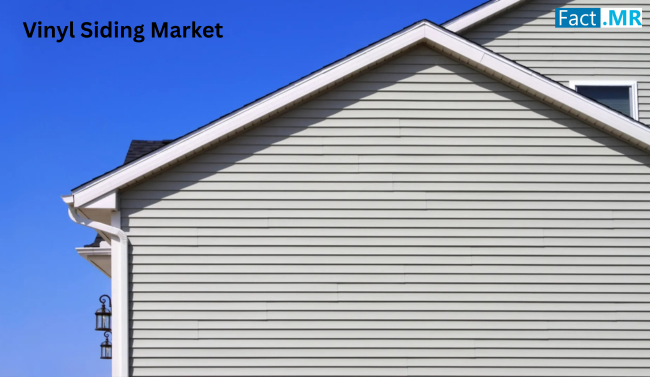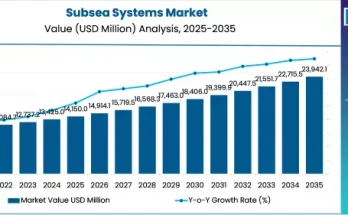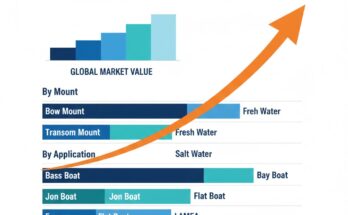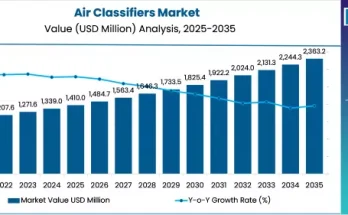Vinyl siding has become a mainstream material in exterior building cladding, prized for its blend of aesthetic appeal, durability, and energy-saving properties. As homeowners and builders seek low-maintenance exterior finishes that mimic traditional wood without the associated upkeep, vinyl has emerged as a dominant choice. This blog takes a deep dive into market dynamics, material trends, regional developments, and future prospects, drawing insights from recent market research.
Market Overview
Vinyl siding is made from polyvinyl chloride (PVC) resin, designed to imitate wood plank, shingles, shakes, or vertical board-and-batten profiles. It offers resilience against weather extremes—moisture, sun, thermal expansion—while delivering a wide variety of colors and finishes. Engineered to be maintenance‑free, vinyl siding resists chipping, peeling, and corrosion, making it especially attractive for residential and commercial buildings.
Environmentally, vinyl siding benefits from low energy use during manufacturing and a high recyclability profile at end-of-life. Government incentives for energy-efficient infrastructure and growing green-building certifications support vinyl as a sustainable exterior solution.
Industry Dynamics
Demand Drivers
- Energy Efficiency Codes & Green Building Standards
Vinyl siding enhances insulation and thermal retention, helping buildings meet evolving energy codes and environmental certifications. This aligns with global efforts to reduce energy consumption in residential and commercial construction. - Affordability & Low Maintenance
Compared to traditional materials like wood or fiber cement, vinyl offers a cost-effective installation option. Homeowners are drawn to its longevity and minimal upkeep—no painting, sanding, or frequent repairs required. - Versatile Aesthetic & Customization
Available in various profiles—horizontal clapboards, vertical board-and-batten, shingles—with realistic textures and finishes, vinyl siding provides design flexibility without sacrificing performance. - Rapid Response in Emerging Markets
In regions with expanding urbanization, vinyl paving solutions are being adopted for new residential projects, driven by demand for modern, low-cost, and durable façade materials.
Challenges
- Raw Material Fluctuations
Vinyl siding prices are influenced by PVC resin and limestone filler costs. Volatility in petrochemical supply chains may raise production costs and squeeze manufacturer margins. - Environmental & Health Scrutiny
Despite recyclability, vinyl faces criticism regarding PVC production emissions and chlorine-based additives. Concerns over plasticizers and regulatory oversight can hinder adoption in eco‑sensitive markets. - Competitive Pressure
Alternatives like fiber cement, engineered wood, and composite panels offer comparable aesthetics and performance, pushing manufacturers to innovate and differentiate.
Product & Segment Analysis
Profiles & Forms
- Horizontal Clapboard remains the most popular profile for homes due to its classic look and ease of installation.
- Vertical and board‑and‑batten styles are gaining popularity in modern architecture and barn‑style buildings.
- Shakes and shingles replicate natural cedar shakes, offering textured charm with vinyl durability.
Insulated vs. Non‑Insulated
Insulated vinyl siding—composed with foam insulation laminated to the back—is gaining traction for improved thermal performance, while non-insulated panels remain widely used in renovation where budget takes precedence.
End‑Use Trends
- New Construction: Developer-driven residential communities and low-cost housing projects favor vinyl for its cost and efficiency.
- Repair & Retrofit: Home renovation waves in mature markets continue to support vinyl siding replacements, driven by aesthetic upgrades and energy retrofits.
- Commercial & Industrial: Low-maintenance facades for light commercial buildings, offices, and industrial structures are increasingly adopting vinyl as a cost-efficient cladding.
Regional Outlook
North America
As the birthplace of vinyl siding, North America represents a well‑established market. It continues to grow—fuelled by residential renovations, energy regulations, and homeowner preference for low-upkeep exteriors. Insulated and premium finish lines are gaining share in green‑oriented states and provinces.
Europe
European regulations favor energy-efficient cladding materials, pushing vinyl siding uptake—especially insulated systems. Western European countries with strict emission standards are seeing rising demand for certified, recyclable vinyl façades.
Asia-Pacific
This region is a powerhouse of growth. Rapid urbanization, affordable housing initiatives, and the modernization of suburban construction drive vinyl adoption. Countries expanding middle-class housing markets increasingly select vinyl siding for its visual appeal, durability, and speed of installation.
Other Regions
Markets across Latin America, the Middle East, and Africa are experimenting with vinyl siding, especially in coastal and arid zones where moisture and UV damage impact traditional materials. Its cost-competitiveness and moderate installation demands appeal to new development zones.
Competitive Landscape & Innovation
Leading manufacturers in vinyl siding routinely adopt:
- R&D in materials: Enhanced capstock and additives reduce fading, improve impact resistance, and lower free‑form emissions.
- Insulated system growth: Foam-backed panels offering enhanced thermal resistance align with building code trends.
- Color retention technologies: Co‑extrusion processes that embed color pigments deeper into the capcoat improve lifespan and repeatability.
- Sustainability certifications: Products that comply with environmental standards, such as recyclability and low VOC emissions, gain marketing edge.
- Customization & digital tools: Manufacturers offer visualization tools, extended profiles, and color matching to support architects and homeowners in design selection.
Notable players include CertainTeed, Royal Building Products, Georgia-Pacific Vinyl Siding, Alside, Mastic Home Exteriors, Kaycan, Mitten Building Products, Ply Gem, and others.
Market Outlook & Future Trends
Continued Growth
The vinyl siding market is expected to maintain steady expansion due to new‑construction growth and retrofit activity. As material prices stabilize and innovation continues, vinyl is well‑positioned for broad adoption.
Sustainability Integration
Regulatory pressure and consumer awareness will push manufacturers toward fully recyclable portfolios, phasing out problematic additives and increasing the share of bio‑based blends.
Smart & Composite Systems
Integration of insulation, breathable barriers, and even heat-reflective coatings adds functional value beyond aesthetics. Smart façades with sensors may emerge to monitor environmental exposure and energy performance.
Design Diversification
Woodgrain, masonry-relief surfaces, and expanded color palettes meet consumer demand for premium looks. Multi-texture and mixed-material façades will become more common in modern domestic architecture.
Channel Evolution
E-commerce and digital custom-order platforms streamline ordering, delivery, and end-user visualization. This supports customization and reduces waste across supply chains.
Strategic Recommendations
For Manufacturers:
- Invest in R&D to balance cost, performance, and sustainability.
- Develop insulated and noise‑reducing siding systems.
- Attain eco‑certifications to appeal to green-conscious consumers.
- Leverage digital visualizers to enhance engagement and decision-making.
For Distributors & Contractors:
- Partner with sustainable brands and promote insulation benefits.
- Educate homeowners about installation techniques and long-term savings.
- Offer value-added services such as recycling programs and warranty integrations.
For Homeowners & Architects:
- Look for warranties covering fade resistance and weathering.
- Consider insulated options for energy savings.
- Select certified, low-emission products to meet health and environmental criteria.
- Use design tools to experiment with profiles, colors, and textures.
Conclusion
The vinyl siding market stands at the intersection of performance, aesthetics, sustainability, and affordability. Its unique combination of easy installation, maintenance-free durability, and adaptability to design trends make it well-suited for evolving building codes and homeowner expectations.
While challenges like material costs and environmental scrutiny exist, manufacturers are responding with innovations in recycling, product composition, and functionality. As global construction trends favor green building and design flexibility, vinyl siding continues to emerge as a versatile and future-ready exterior solution.
Related Reports:
Transformer Steel Market
https://www.factmr.com/report/1638/transformer-steel-market
Loading Platform Canopies Market
https://www.factmr.com/report/1646/loading-platform-canopies-market
Aerobic Treatment Units Market
https://www.factmr.com/report/1656/aerobic-treatment-units-market
Mining Vehicle Attachments Market
https://www.factmr.com/report/1743/mining-vehicle-attachments-market



